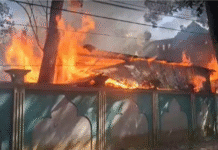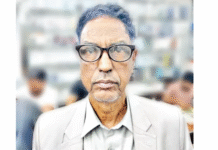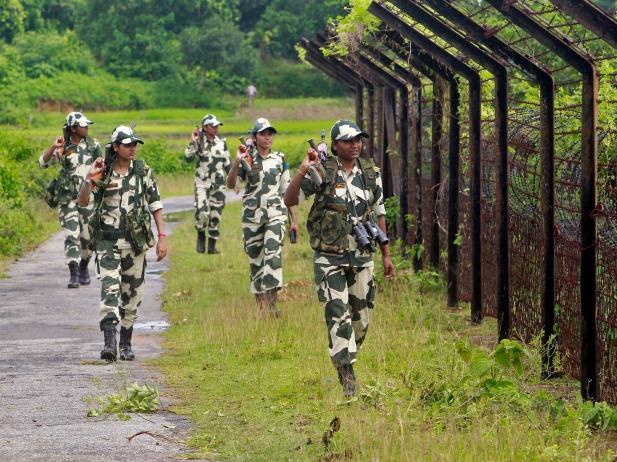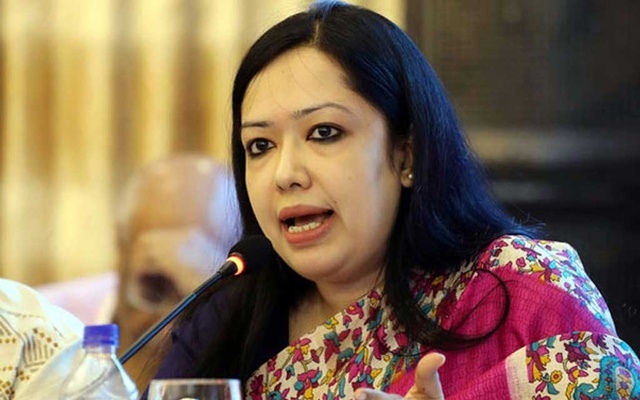
What’s in a name? Quite a lot, actually. Names define identities. Names shape perceptions. They also help set narratives, assign blame, and even influence outcomes. It, therefore, makes sense that the simple act of naming a “mob” has suddenly become contentious because of all the baggage it brings with it in present-day Bangladesh. This debate—triggered by the launch of the Operation Devil Hunt following renewed anti-fascist campaigns and Adviser Mahfuj Alam’s characterisation of mobs as “devils” in a stern warning to Touhidi Janata—was perhaps inevitable in a country reborn through a violent uprising by individuals who would have been branded terrorists or anarchist mobs, and severely punished, had they failed. In a remarkable turnaround, they are now national heroes, and rightly so.
The question is, who qualifies as a mob then? Can such a generic term even capture the diversity and nuances of different groups? While Mahfuz was more specific in his portrayal, the home ministry was less so as it alluded to “saboteurs who attacked students,” individuals with warrants against them, “troublemakers”, and even the eponymous “devils” as targets of the joint forces operation. This could encompass, among others, anyone involved in the events between the demolition of the historic Dhanmondi 32 residence of Sheikh Mujibur Rahman and the Gazipur incident, where anti-fascist protesters themselves became targets of a mob allegedly including Awami League activists. In other words, their identities can be as overlapping as conflicting. Despite their shared aggression, whether a group is labelled as protesters, agitators, or simply a mob can lead to vastly different public perceptions and politico-legal consequences.
So before diving into these complexities, let’s establish the basics. A mob, by definition, is a large, disorderly crowd intent on causing disturbance or violence. If you search online, you will come across context-specific variations such as “woke mobs,” “vigilante mobs,” “nationalist mobs,” “religious mobs,” “troll mobs,” etc. I remember writing about “lynch mobs” in 2019 when mass hysteria over a bizarre rumour—that human heads were being collected for Padma Bridge construction— led to seven people being killed. As I argued back then, mob violence “is not justice—it’s what justice looks like when it is privatised and leased out to the most dominant groups in society.” And whatever form it takes, and however justified the motive seems to be, it remains unacceptable in a democratic system where due process and rule of law are considered sacrosanct.
Since the fall of the Awami League government, there has been a wave of mob-related incidents leaving debilitating effects across various sectors, including education. On Monday, a group of individuals besieged a stall at the Amar Ekushey Boi Mela over a book by controversial writer Taslima Nasrin, forcing it to close. A day earlier, a mob torched the house of a double-murder suspect in Rangpur’s Pirganj upazila. Similar disturbances, big or small, are surfacing almost regularly—a trend often attributed to the previous regime’s authoritarian rule that fostered deep-seated anger and distrust among people. While such behaviour cannot be condoned, things get trickier when the target of this anger is Awami League itself, or what remains of it.
Another danger of encouraging mobism is how easily it can morph into various expressions of fanaticism. For instance, the same mobs that destroyed Mujib’s murals and statues over the past months could feel emboldened to attack any structure, symbol or event that they perceive to be anti-religious. In fact, some already are. A recent video shows a man standing before the Raju Memorial Sculpture at Dhaka University, calling it an “idol” and urging its destruction. Monday’s book fair assault, the disruptions of women’s football matches in Joypurhat and Dinajpur, or the spate of attacks on shrines in recent months—all point to the uncontrollable effects of encouraging mobism.
The argument of those opposing the labelling of such acts as mob violence is, if I understand correctly, that any actions targeting the symbols of the ousted regime are necessary to prevent its resurgence. Theoretically, you cannot deny the logic—the gross human rights violations the party committed during July-August alone, as highlighted again by the just-released fact-finding report of the UN human rights office, make this non-negotiable. The question, however, is not about the goal but the methods being used to achieve it. After the uprising, there was broad consensus that what happened during this period, including the destruction of public property and infrastructure, served a greater cause, and as such, participants faced no legal repercussions. But should such concessions still be granted six months later, when the nation is trying to claw its way back to some much-needed stability? The answer is self-evident.
“But what if there are provocations?” asked some. True, the Dhanmondi 32 demolition was largely a reaction to Sheikh Hasina’s virtual speech from India—an act that, given the trauma of her reign of terror, was bound to provoke outrage. Had she not shown the audacity to attempt a political comeback while evading justice for her many crimes, the destruction could perhaps have been avoided. But this reasoning is tenuous—expecting a former dictator to behave responsibly is a naivety we cannot afford at this stage.
What about our own responsibility to pre-empt her move, and more importantly, protect the greater interests of the nation? The anti-fascist camp’s headlong dive into a trap ostensibly designed to raise questions about the direction of “new Bangladesh” exposes the fallacy of their campaign. Understanding the difference between fighting actual fascism and scoring symbolic victories in an already triumphant landscape is crucial. Moreover, a mob is a deeply unstable force that may take on a will of its own once activated. It is no surprise that the call to disrupt Hasina’s speech set off a domino effect of attacks, vandalism, and arson targeting Awami League-linked houses and establishments in as many as 35 districts. Will anti-fascist mobilisers take responsibility for these attacks, or the reputational damage thus caused to Bangladesh? The UN has already warned about meeting international standards in trials for the perpetrators of July-August massacre. We cannot expect fair justice and global support for our bid while condoning extrajudicial actions against the remnants of Awami League.
The reason we focus more on the Dhanmondi incident and its aftermath is because of the insistence by some anti-fascist voices on challenging any labelling of their supporters, as if they represent an organised force governed by strict discipline. They do not. The truth is, under the broad anti-fascist umbrella, numerous student, political and ideological banners exist—just as there are many types of mobs emerging across the country. A mob, however you characterise it, cannot be expected to see reason or exercise restraint. It cannot distinguish between political and criminal actions, between “reactions” and “revenges,” or between legitimate targets and collateral damage.
Another danger of encouraging mobism is how easily it can morph into various expressions of fanaticism. For instance, the same mobs that destroyed Mujib’s murals and statues over the past months could feel emboldened to attack any structure, symbol or event that they perceive to be anti-religious. In fact, some already are. A recent video shows a man standing before the Raju Memorial Sculpture at Dhaka University, calling it an “idol” and urging its destruction. Monday’s book fair assault, the disruptions of women’s football matches in Joypurhat and Dinajpur, or the spate of attacks on shrines in recent months—all point to the uncontrollable effects of encouraging mobism.
As part of the Operation Devil Hunt, the authorities have so far detained nearly 3,000 individuals, many likely linked to recent incidents of chaos and aggression. But security crackdowns alone cannot prevent this trend. It demands deeper reflection. Should we continue to condone unregulated public outbursts? Should we so easily fall for “provocations?” Or can we channel our grievances into structured responses that can solidify our transition to democracy, prevent the resurgence of any form of fascism, and restore Bangladesh’s global standing? Whatever we do, the idea of a mob must be left in the past.
Badiuzzaman Bay is assistant editor at The Daily Star.
Views expressed in this article are the author’s own.
Follow The Daily Star Opinion on Facebook for the latest opinions, commentaries, and analyses by experts and professionals. To contribute your article or letter to The Daily Star
Opinion, see our guidelines for submission.









